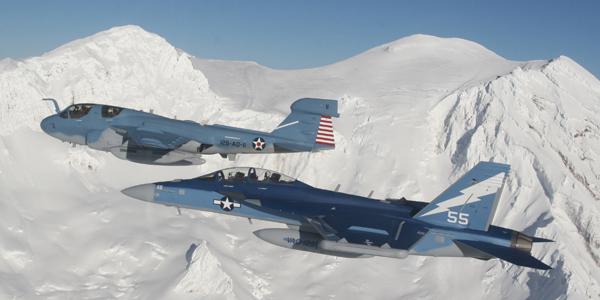United States Playing Catch-up on Electronic Warfare
The United States is falling behind potential adversaries, such as China and Russia, in key technological areas, including electronic warfare, warned Frank Kendall, undersecretary of defense for acquisition, technology and logistics, while testifying before the House Armed Services Committee on Wednesday, January 28.
In his prepared testimony, Kendall recalled that in 1994, the intelligence community estimated it would take 15 or 20 years for China to become a peer competitor to the United States. The intelligence estimates were correct, and that day has arrived, Kendall indicated. “China has developed and fielded advanced weapons designed to defeat U.S. power projection forces. Many more are in development. These systems include a range of capabilities, but foremost among them are accurate and sophisticated cruise and ballistic missiles designed to attack high-value assets, particularly the aircraft carriers and airfields that we depend upon for power projection,” he said.
He then hinted at electronic warfare’s key role in national defense. “These missiles, fielded in large numbers and coupled with advanced electronic warfare systems, modern air-to-air missiles, extensive counter-space capabilities, improved undersea warfare capabilities, fifth generation fighters and offensive cyber weapons pose a serious and growing threat,” he said.
When asked how the United States compares to potential adversaries in electronic warfare, Kendall replied that the nation has neglected that area for quite some time. “I think we’re behind right now. We’re playing catch-up to some degree on that.”
He did cite a Next Generation Jammer program in the Navy, saying the department does have some programs underway. “I’d like to see those things accelerated where we can,” Kendall added. “That’s an area where we need to focus a lot more attention going forward than we have in the past.”
China’s modernization program is the most ambitious, but Russia and others such as Iran are also fielding precision missiles and other capabilities that threaten U.S. power projection capabilities, he told the committee. “Even if our relationships with these states remain peaceful and military confrontation with them never occurs, the capabilities I am concerned about will inevitably proliferate to other states where the likelihood of conflict may be greater,” Kendall explained.
While emphasizing the need for the Defense Department to reform its acquisition process to buy smarter and field advanced technologies more quickly, Kendall also lamented the impact of budget cuts and sequestration. “The combined impact of reduced budgets, even without sequestration, ongoing combat operations and our global commitments significantly impact U.S. investment in new technology and weapon systems. The rise of foreign capability, coupled with the overall decline in U.S. research and development investments, is jeopardizing our technological superiority,” he explained.
The department’s research and development funding has dropped from a peak of about $80 billion to about $65 billion, he pointed out, explaining that the cuts result in the loss of experts. “That’s a pretty dramatic drawdown. I think of that, frankly, as letting the engineers that are part of our force structure go, and when those people leave the defense industry, they’re probably not coming back,” he said, again citing information warfare. “That’s a very special skillset. You can’t develop somebody who is an expert at that overnight. It takes time, and you get that expertise by working on programs, by developing new, cutting-edge systems,” Kendall added.



Comments